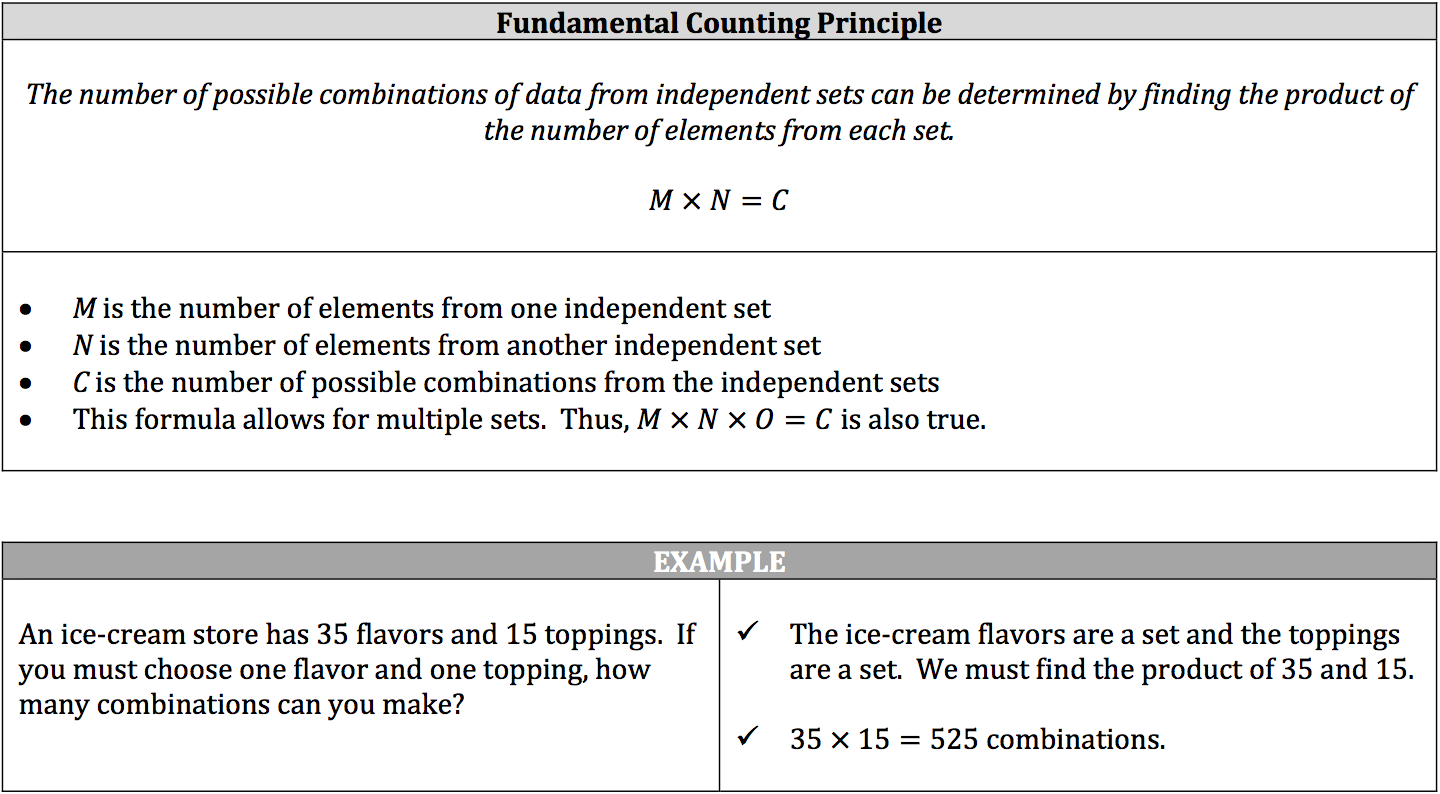The Fundamental Counting Principle determines the number of combinations one can make with data pulled from independent sets. For example, an ice‐cream store has many flavors of ice cream and many types of toppings. The flavors are elements in one set while the toppings are elements in another set. If you are allowed to choose one element from each set, you can determine how many combinations you can make by simply multiplying the number of elements in each set together.

The Fundamental Counting Principle also works when you are making more than one choice from independent sets, but you must pay attention to how you are making those choices. If you can repeat choices made, then you count each set the number of times you are making choices. If you cannot repeat choices made, then you count each set the number of times you are making choices and deduct an element from the set each time. It’s like probability where you pull a marble out of a bag and put it back versus you pull a marble out of a bag and do not return it.



